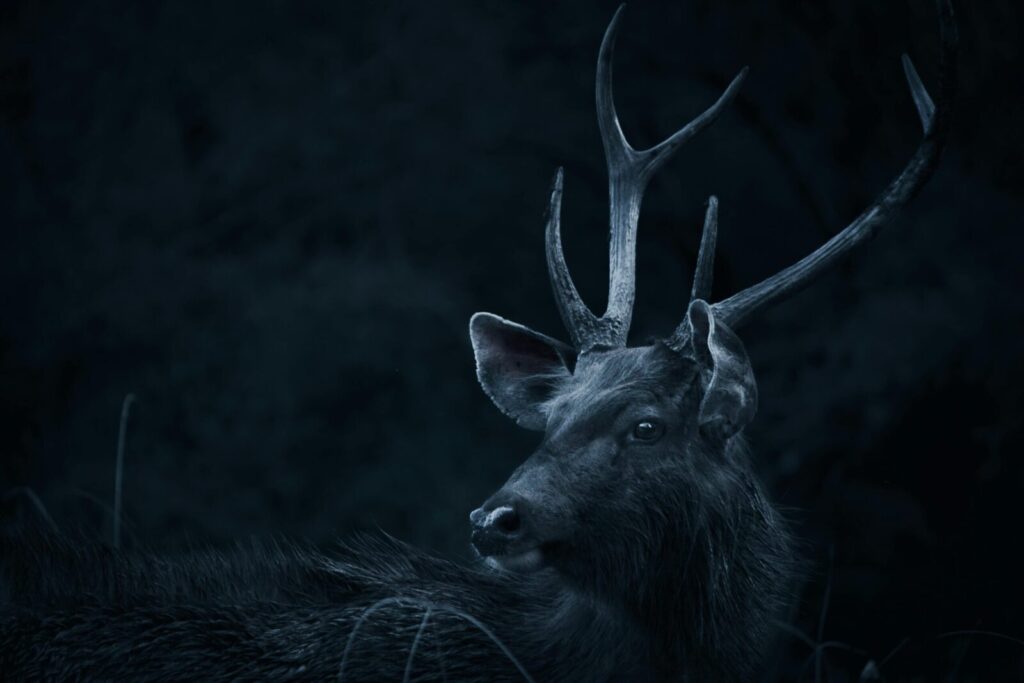If you’ve ever driven at dusk or night and suddenly seen a deer freeze in your headlights, you may have wondered why this happens. This behavior, often alarming to drivers, is actually a natural response rooted in the deer’s biology and instincts. Deer are prey animals, and when they perceive a potential threat, their first reaction is often to remain motionless. This “freeze” response helps them avoid detection by predators, as movement can attract attention. In the case of cars, bright headlights can startle a deer, causing it to pause instead of fleeing immediately. Additionally, deer have wide-set eyes that give them excellent peripheral vision but can make judging the speed and distance of approaching vehicles difficult. For drivers, this means extra caution is necessary when driving in areas where deer are common, especially at dawn or dusk. Slowing down, scanning the sides of the road, and staying alert can help prevent collisions.
Night Vision Adaptations and Sensitivity

Deer are crepuscular animals, meaning they are most active at dusk and dawn, and their eyes are specially adapted to low light conditions. Their retinas contain far more rod cells, which detect light intensity, than cone cells, which detect color, compared to humans, and they also have a reflective layer behind the retina called a tapetum lucidum that boosts their ability to see in dim light. Because of this adaptation, when a bright vehicle headlight suddenly illuminates them, the intense light can temporarily blind or disorient them, and thus they may freeze rather than flee.
Depth Perception and Unfamiliar Threats
Because deer have their eyes positioned on the sides of their heads, they possess a wide field of vision but reduced binocular vision and depth perception compared with predators or humans. That means when a fast-approaching vehicle appears, their brain may not correctly judge its speed or direction, and they may not recognise it as a threat in the way they would a natural predator. Faced with an unfamiliar stimulus like headlights shining in their eyes, they may freeze as their default survival response rather than dart off.
The Freeze Response as a Survival Instinct

In the wild, staying still when a predator is nearby can sometimes help an animal avoid detection, especially if the predator moves by sight and motion. For deer,freezing can be a natural defensive strategy. When confronted by something unusual at night, such as a bright headlight, the deer may instinctively freeze, hoping the danger will pass rather than running into open danger.
Why Headlights Trigger Freezing Behaviour
When strong vehicle headlights flood a deer’s eyes at night, the contrast between the bright beam and the dark surroundings becomes overwhelming. That glare can incapacitate the deer’s vision, making it unable to identify the approaching object or its escape route. In that moment of confusion, the deer freezes rather than reacting with flight because its usual mechanisms for detecting and escaping predators are disrupted by the bright light.
Implications for Drivers and Road Safety
For drivers, this behaviour means that when you see a deer standing motionless ahead in your headlights, you should recognise it may not be aware of your approach or able to respond properly. Statistics show deer vehicle collisions are more common at dusk and night, and that driver behaviour and lighting play important roles. To reduce risk, slow down in areas known for wildlife crossings, dim high beams when appropriate, and remain alert for animals near the roadside, especially in low light conditions.
Strategies to Prevent Collisions with Frozen Deer

Because deer freezing in headlights is common when visibility is low, drivers should consider proactive strategies such as reducing speed in known deer zones using high beams where safe to increase reaction time and watching for eye glow reflections from the roadside. Additionally, newer research shows that vehicle modifications such as front-mounted LED lighting bars might reduce the chance of deer freezing and hence reduce collision risk by improving the animal’s ability to detect the vehicle earlier.
Comments